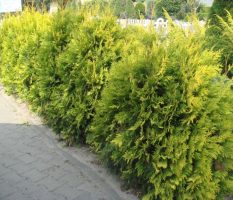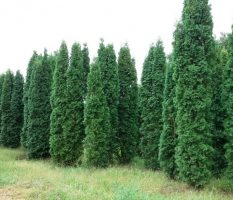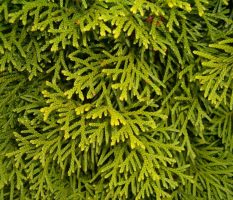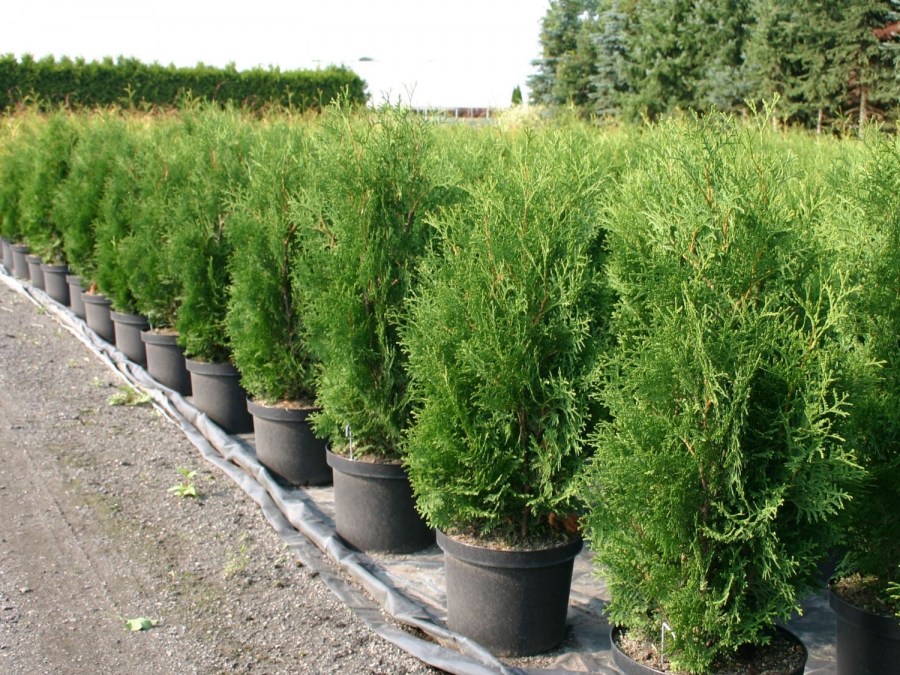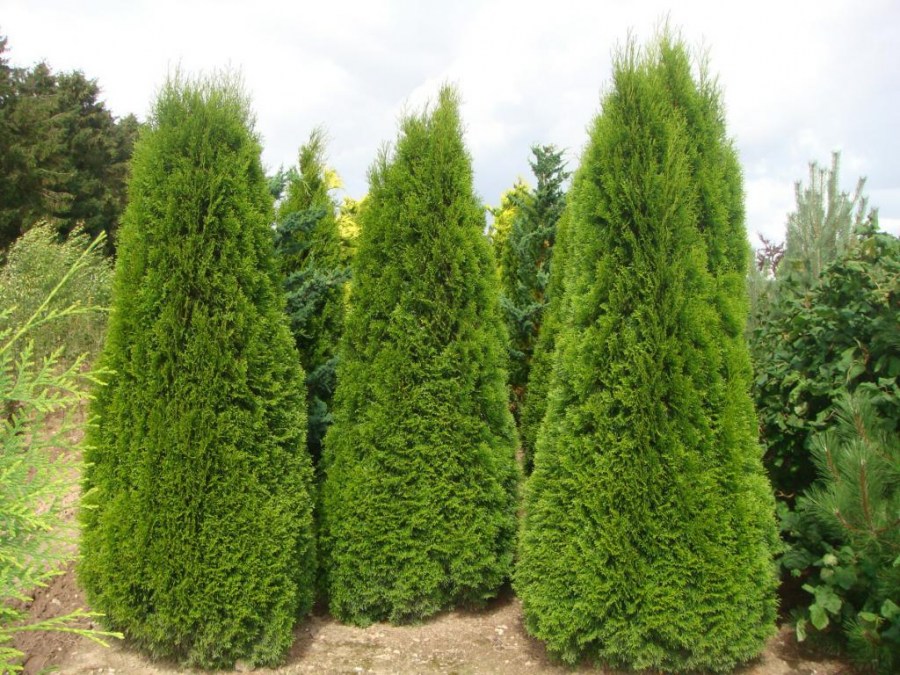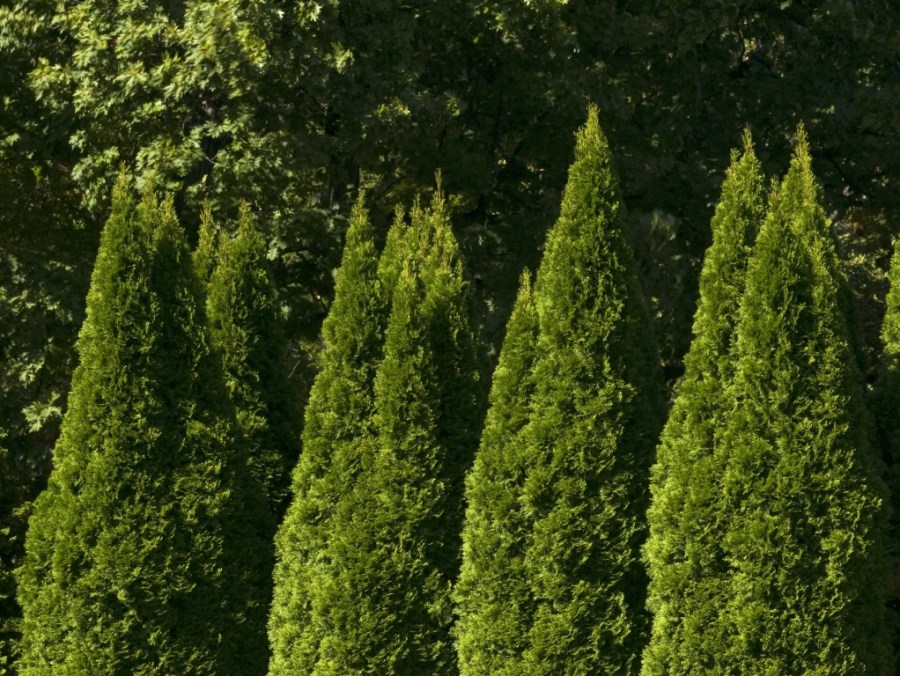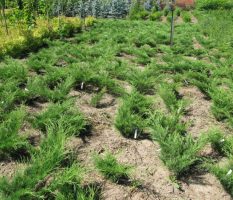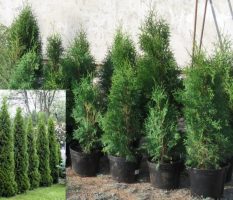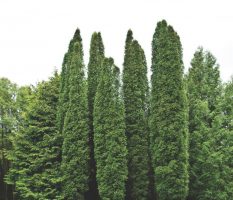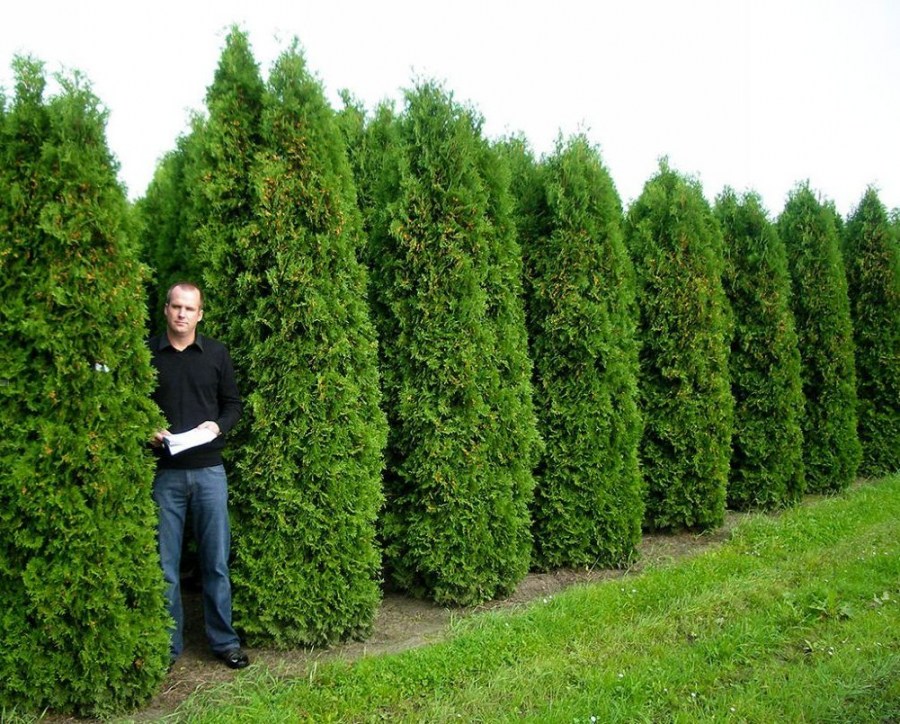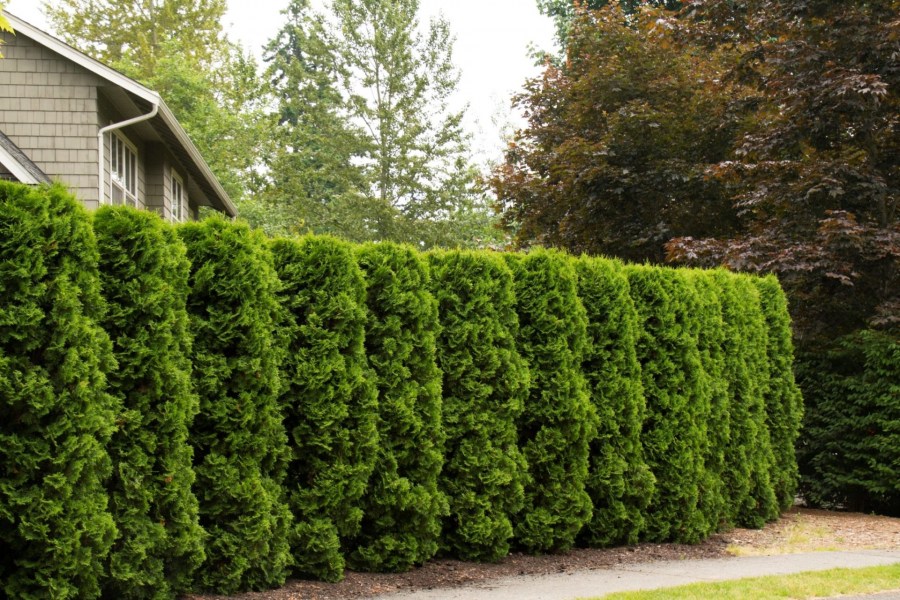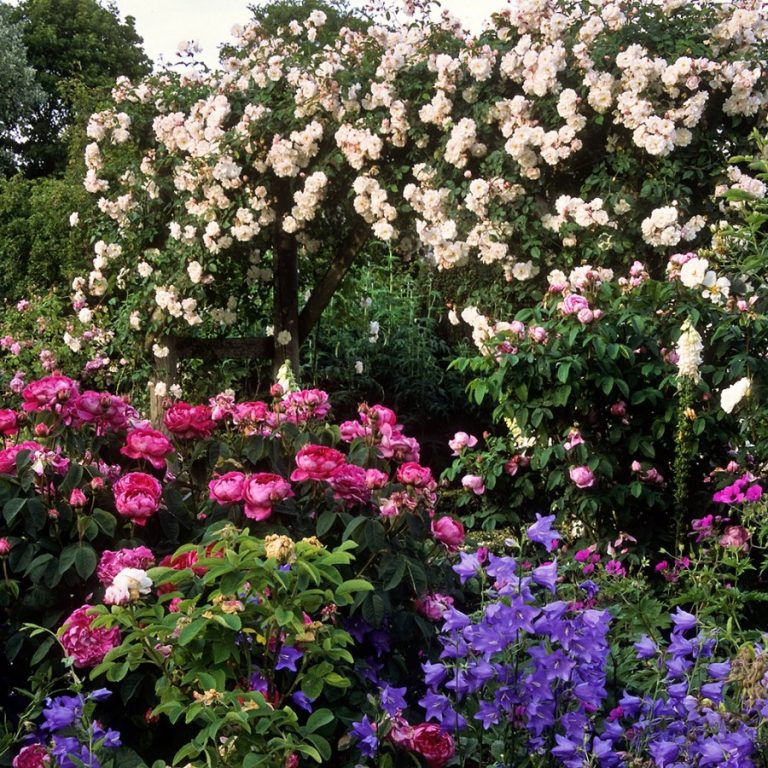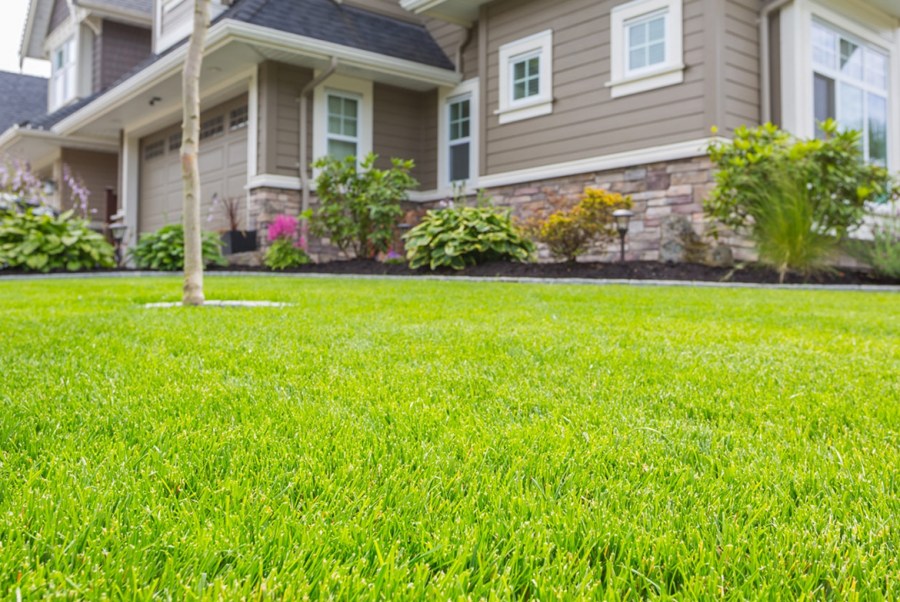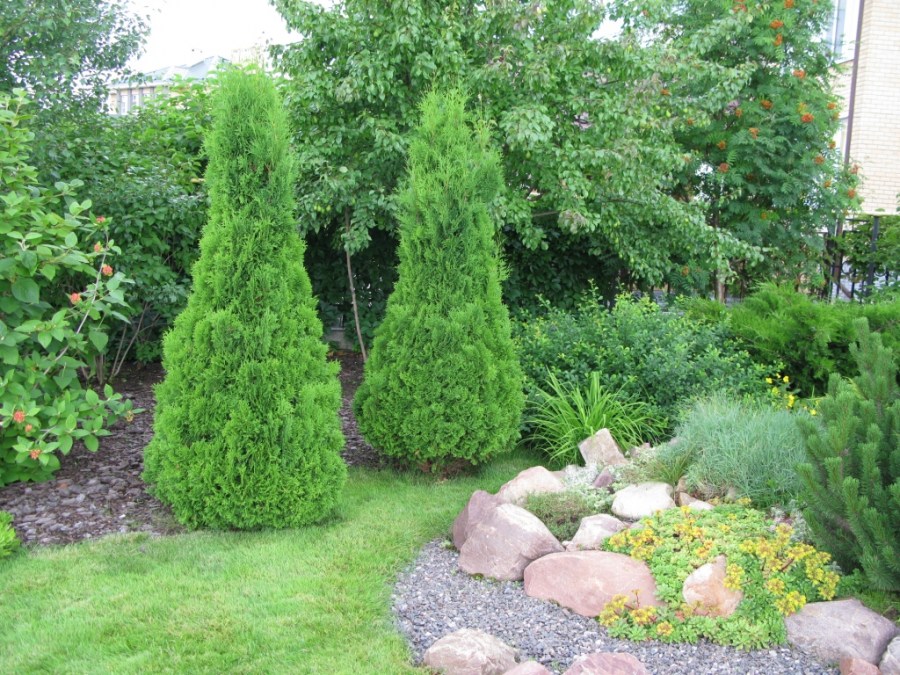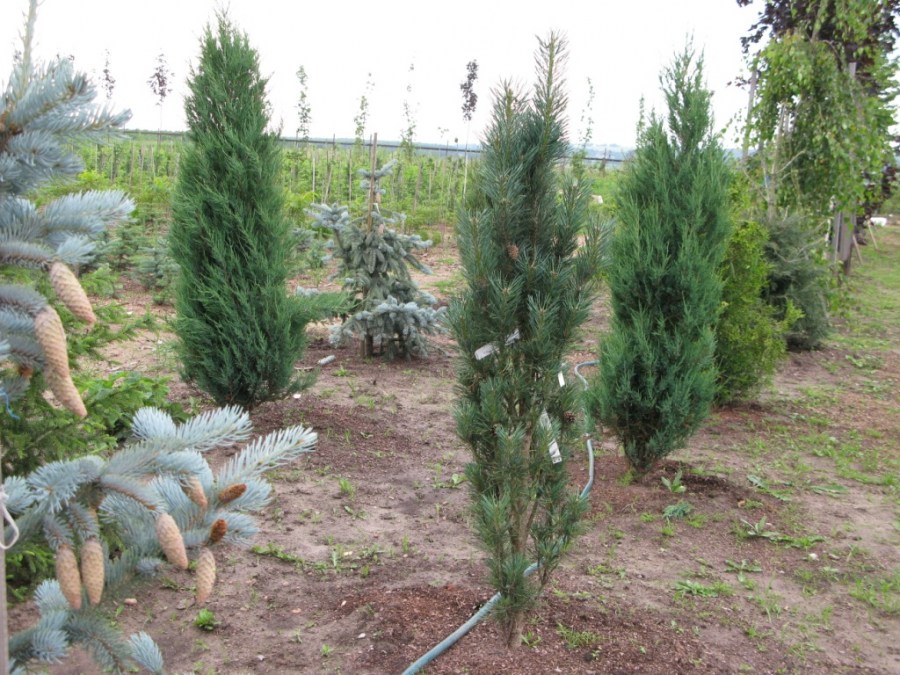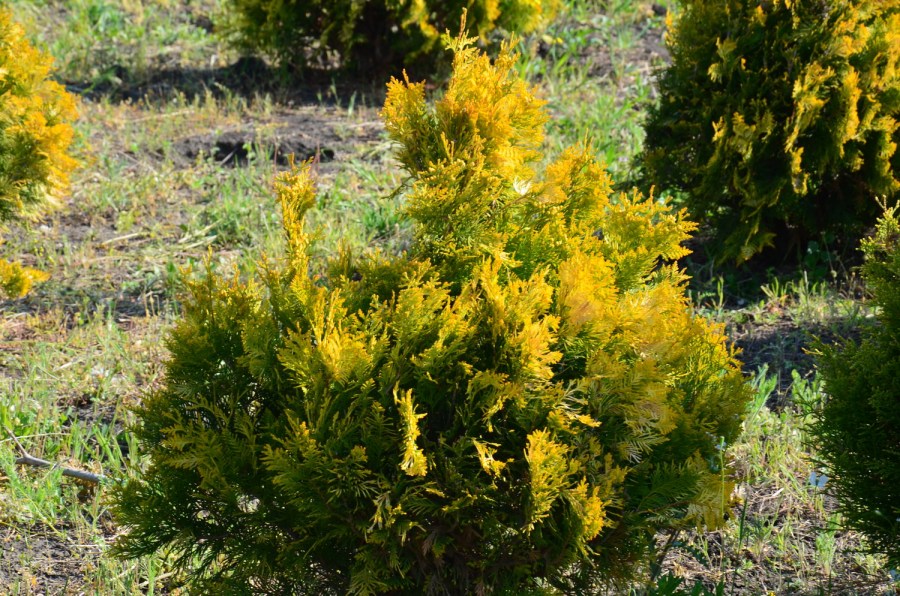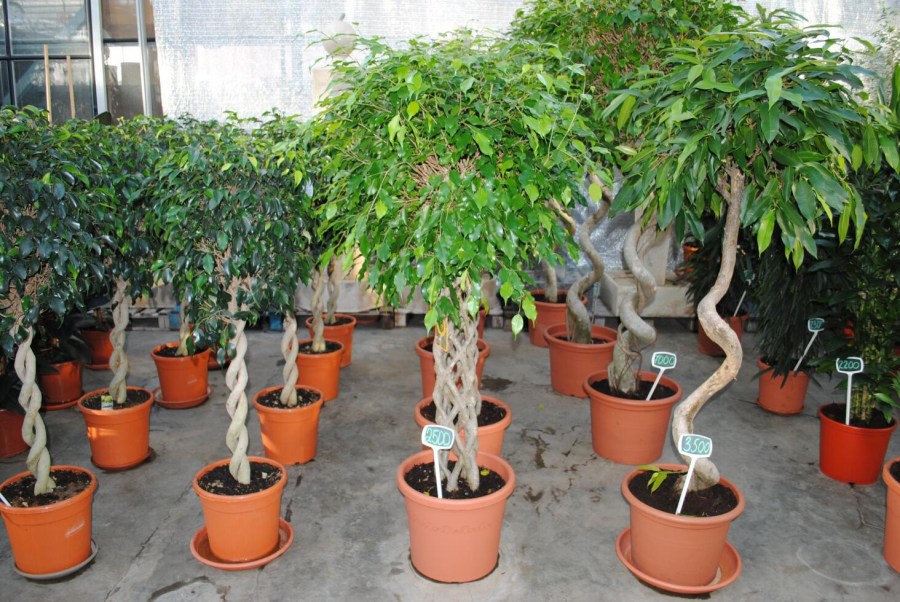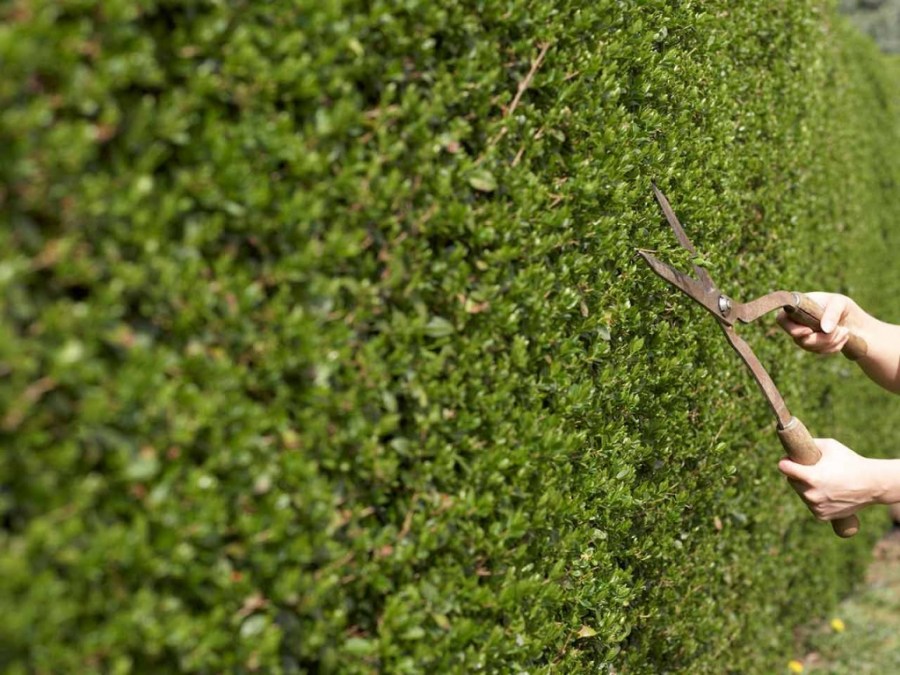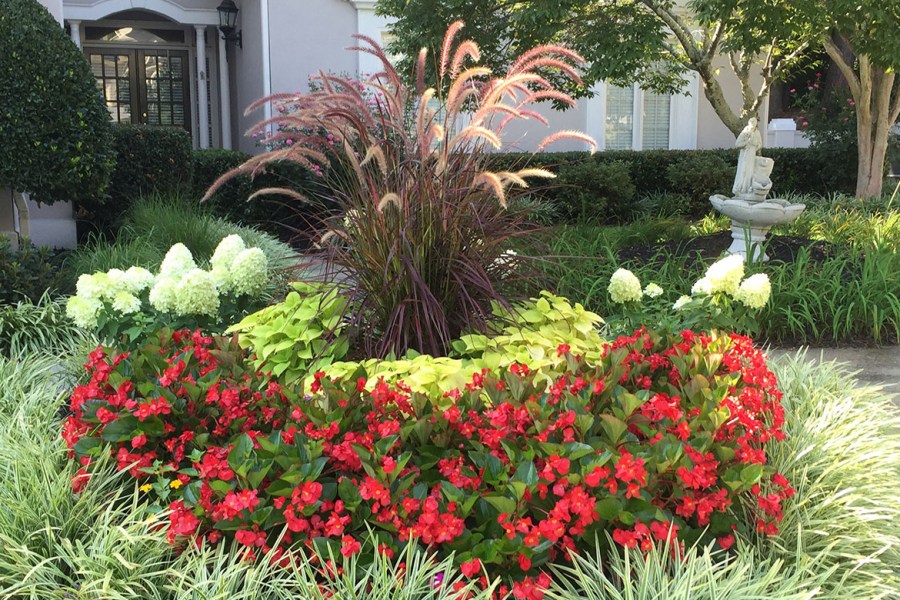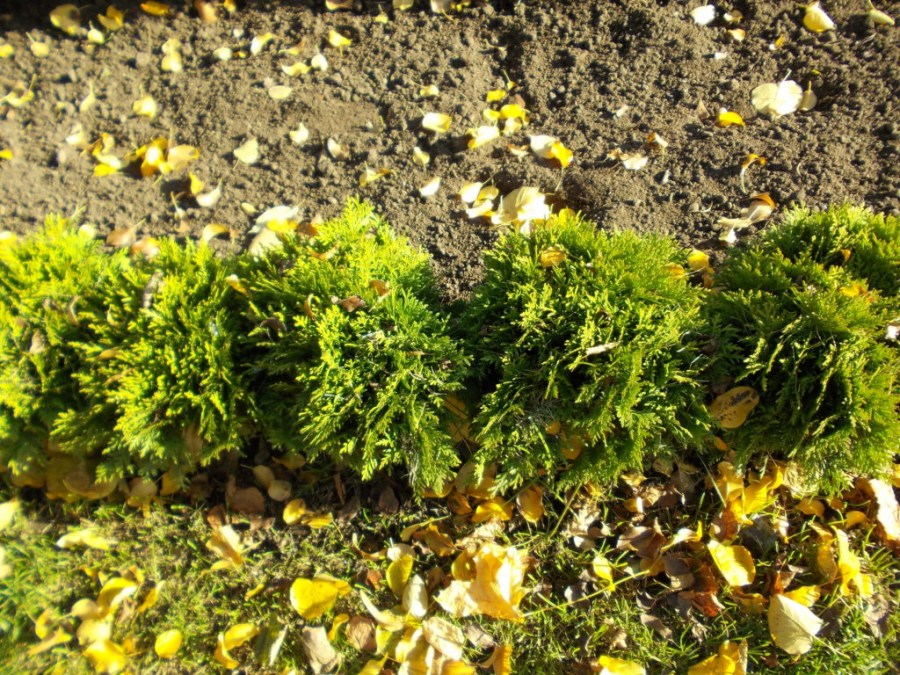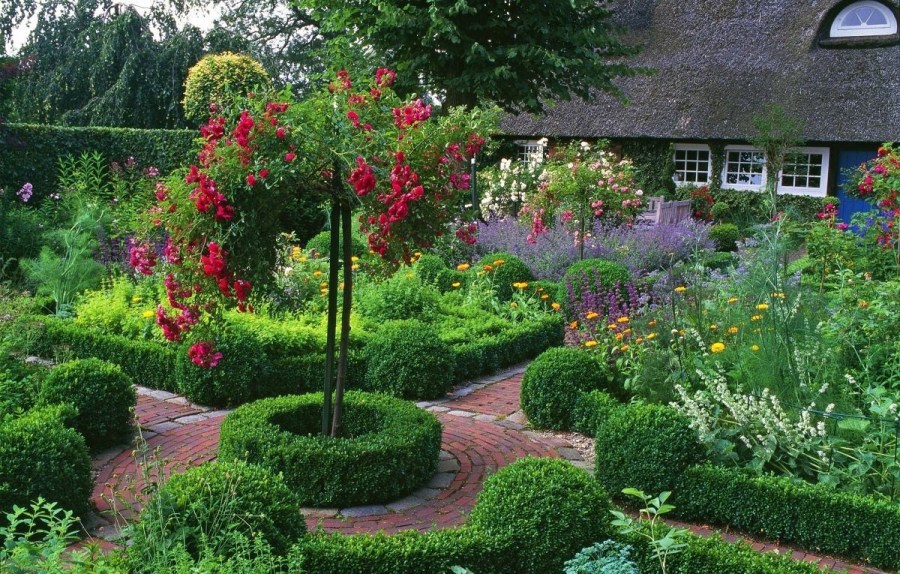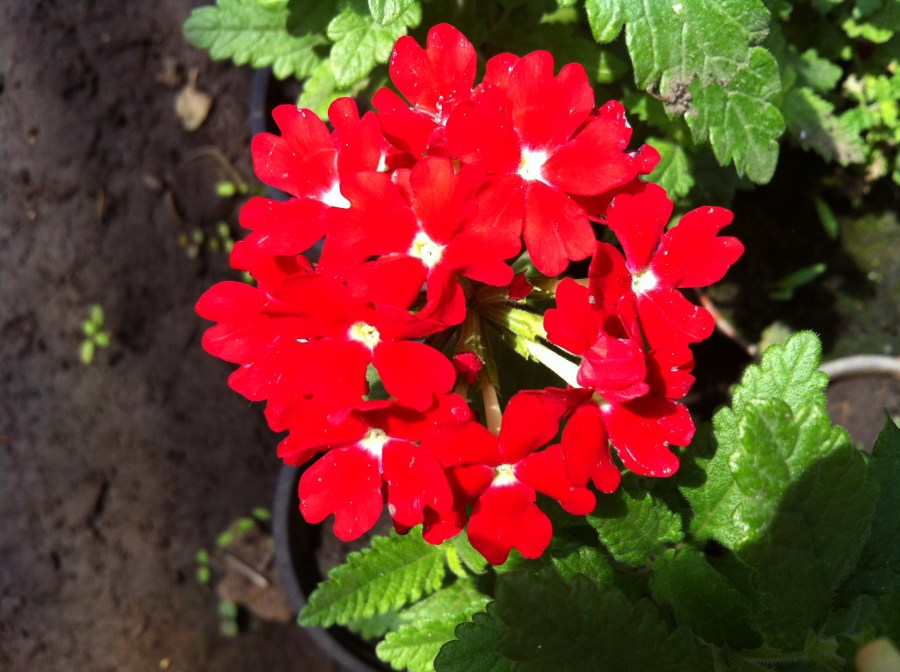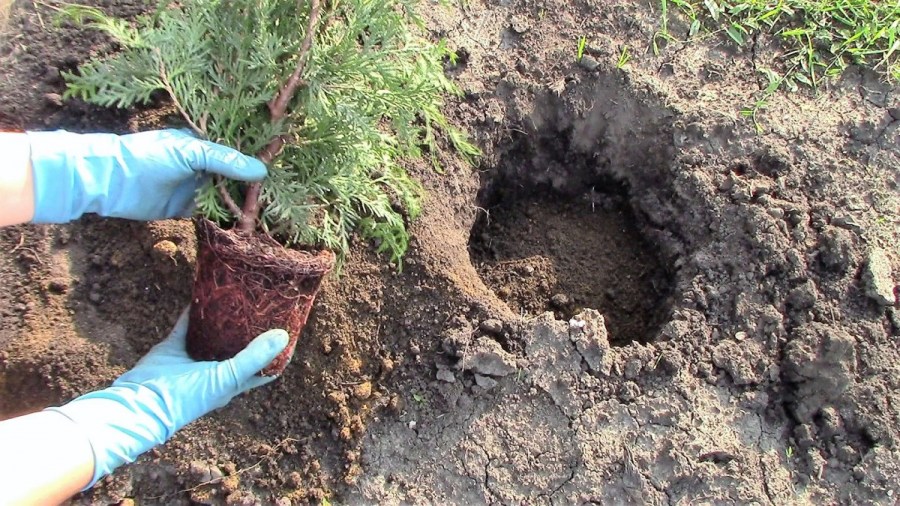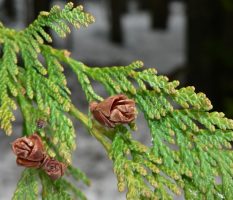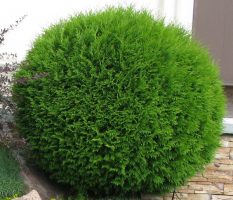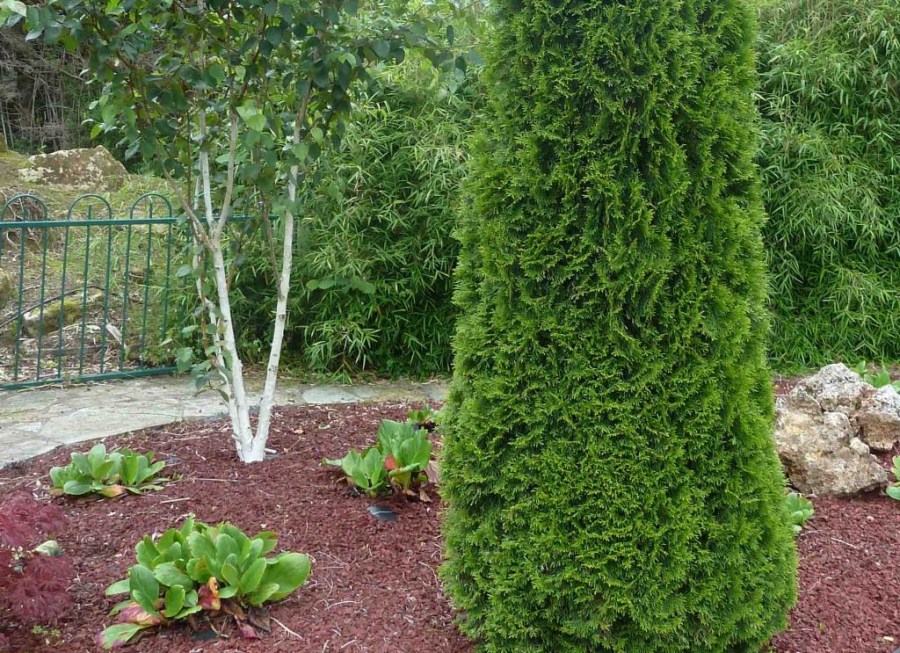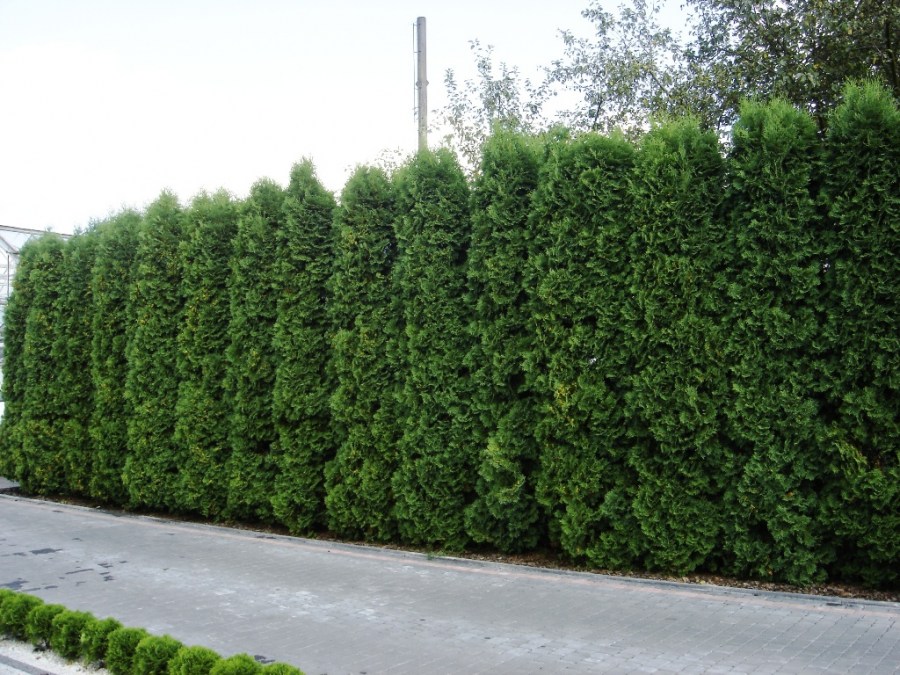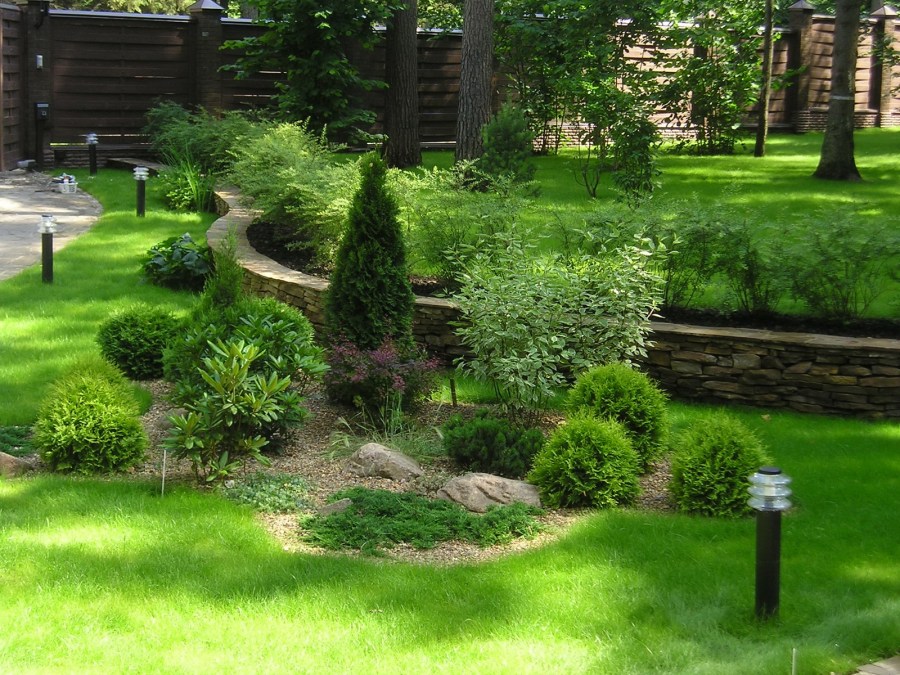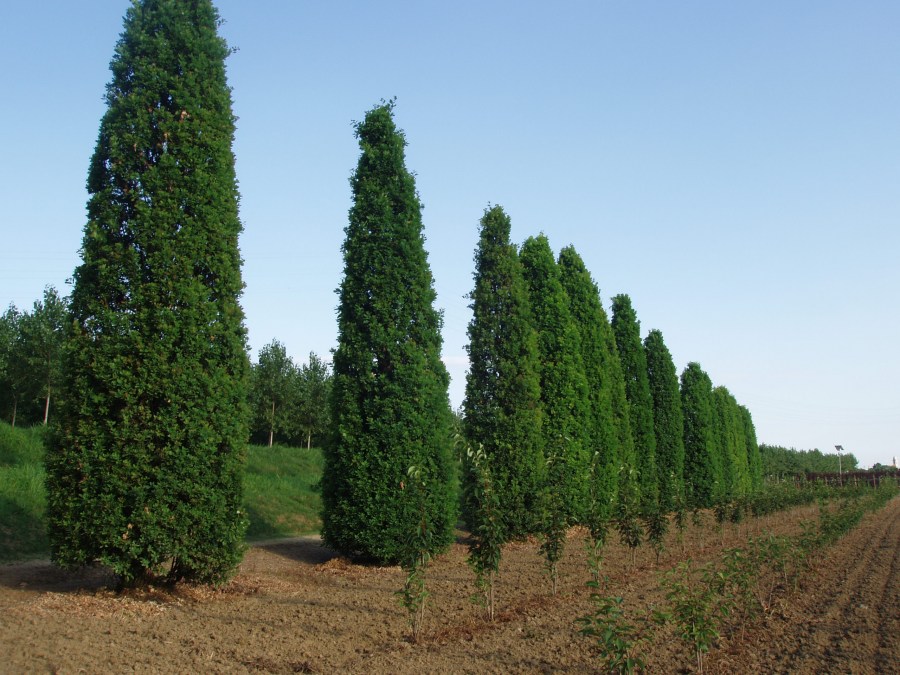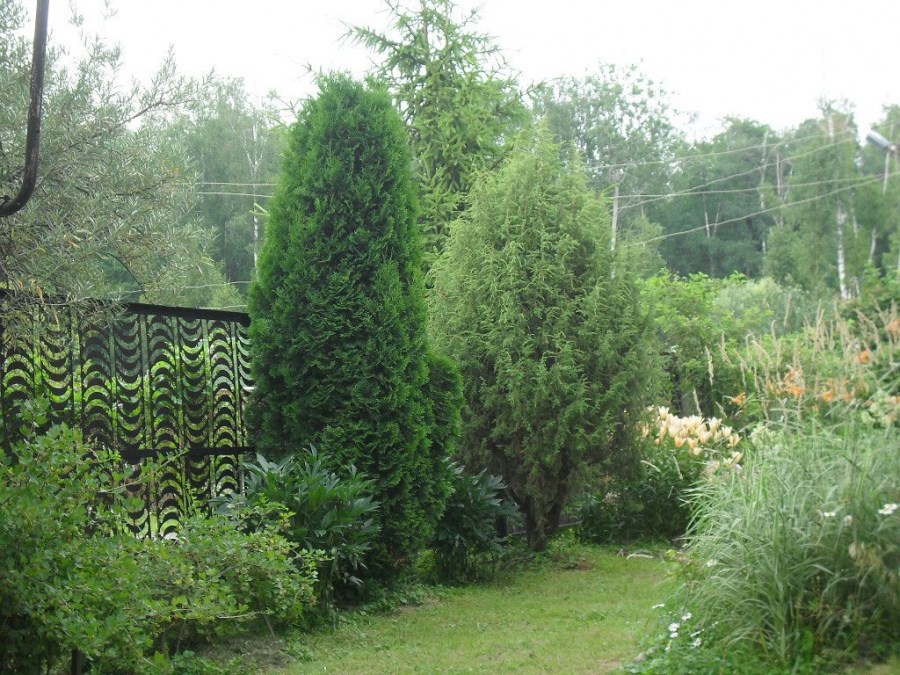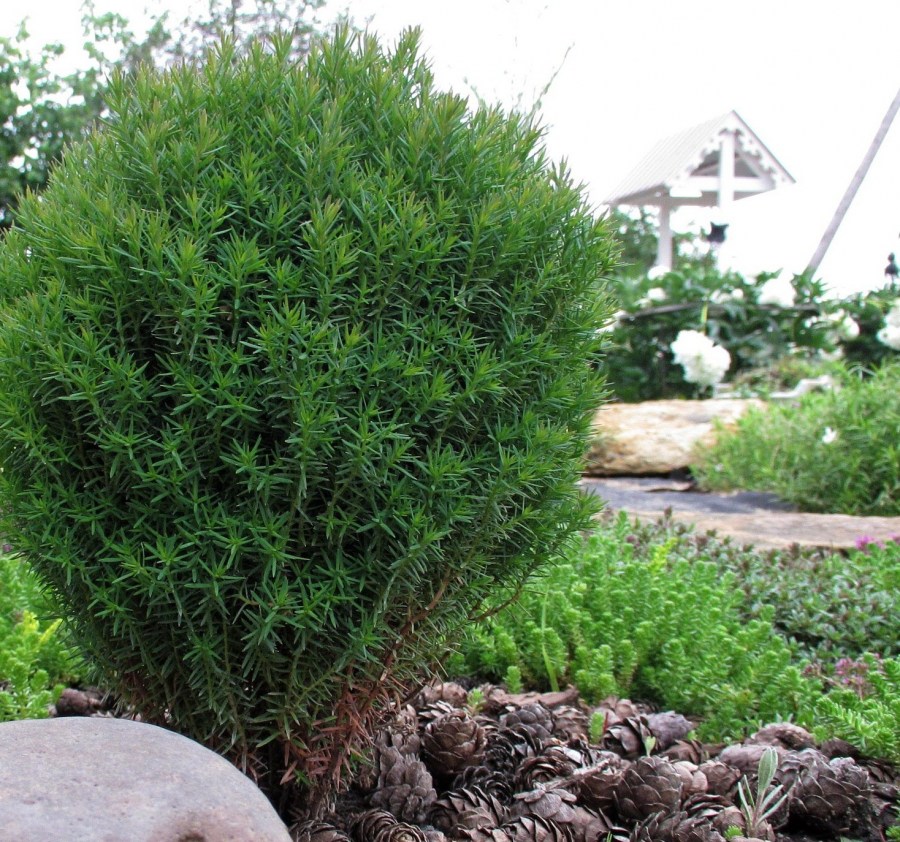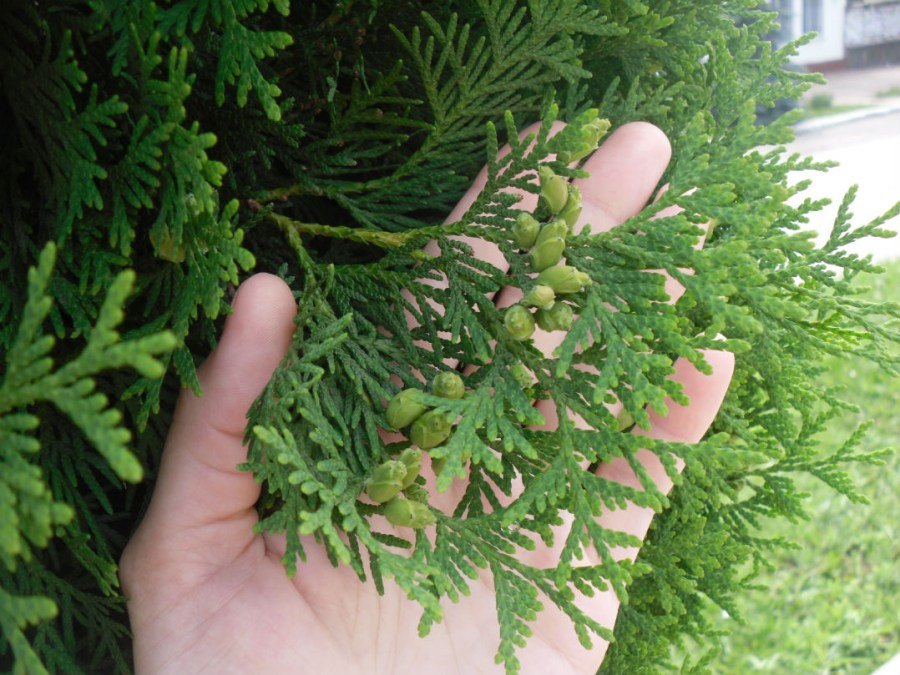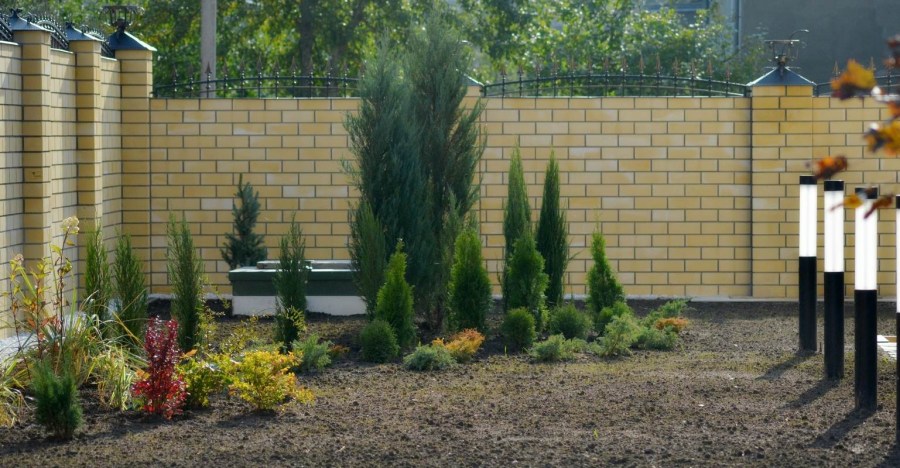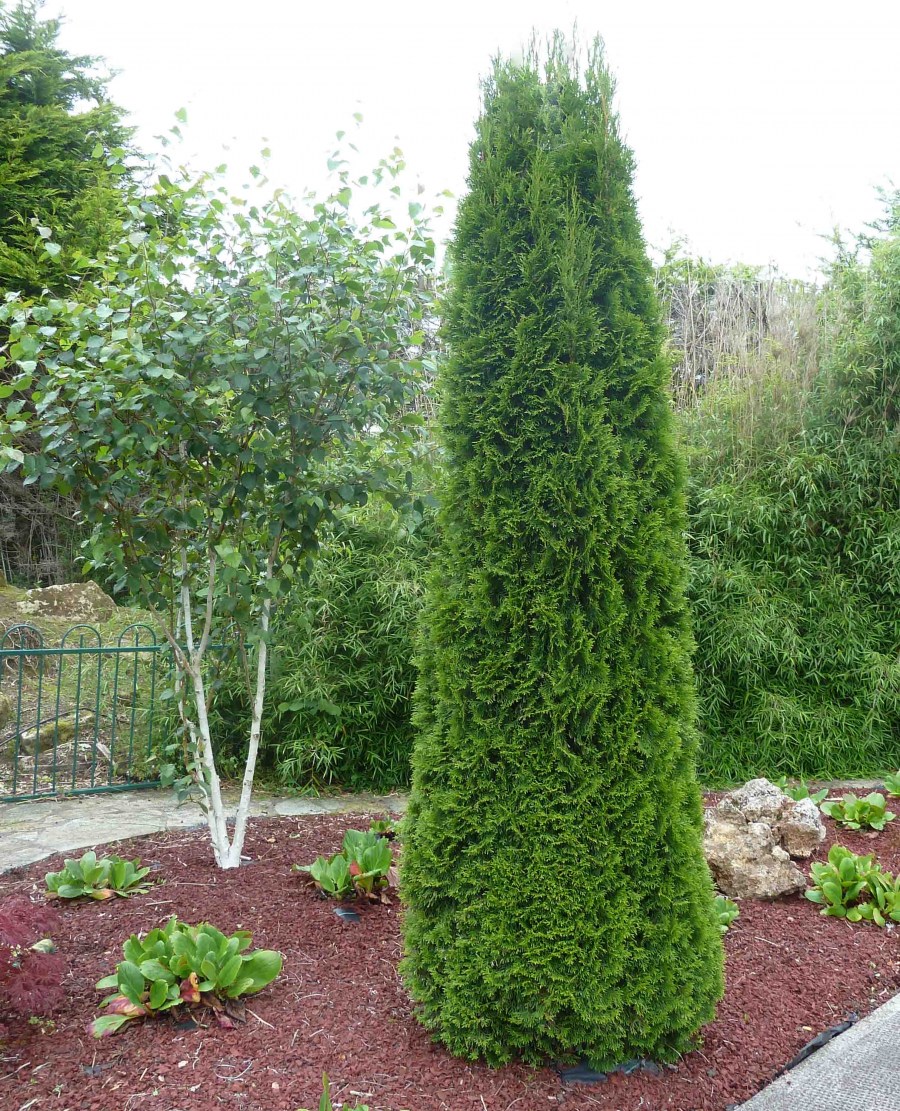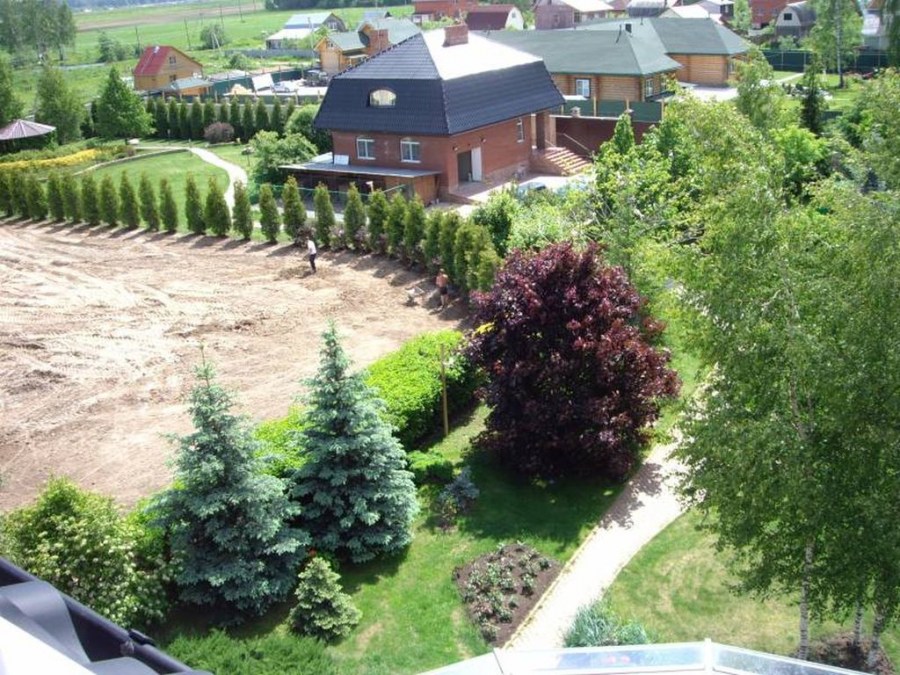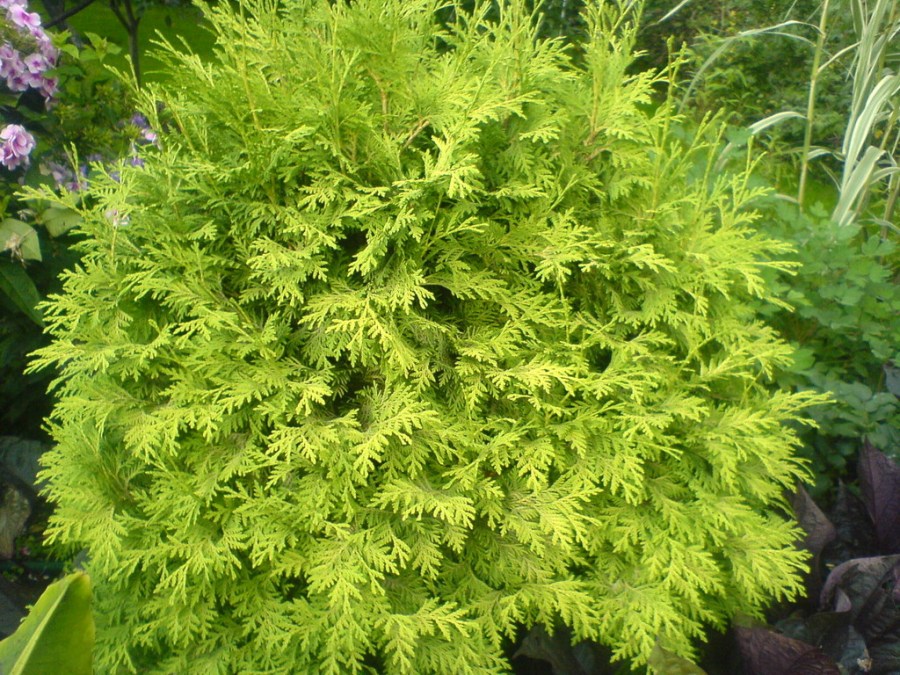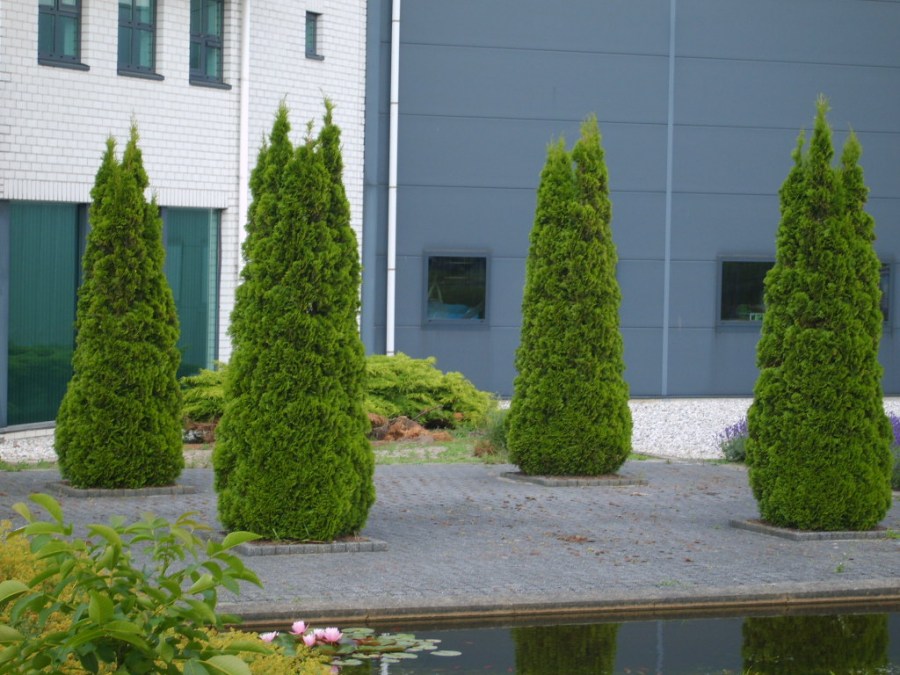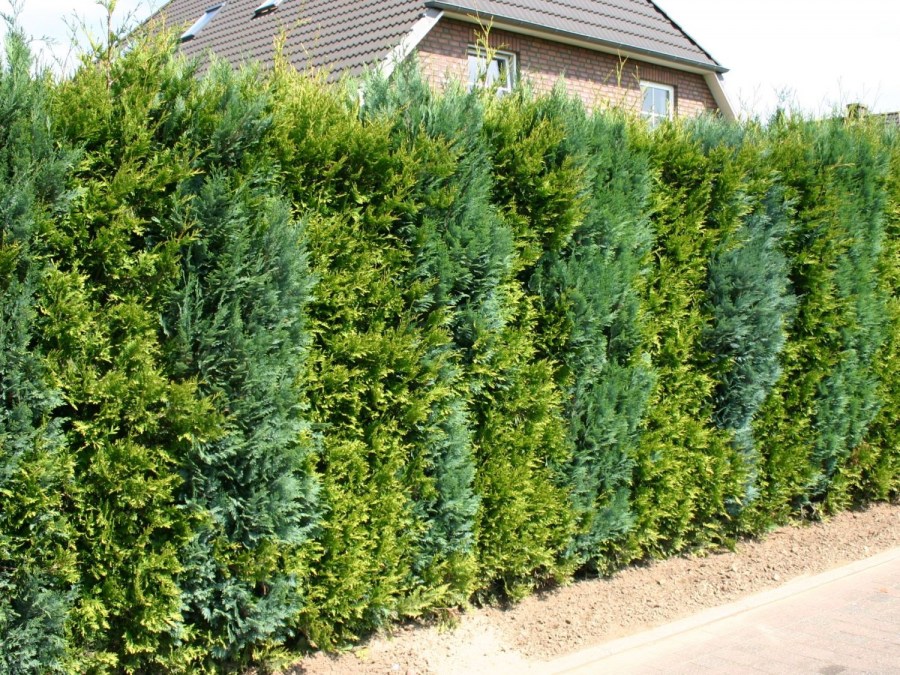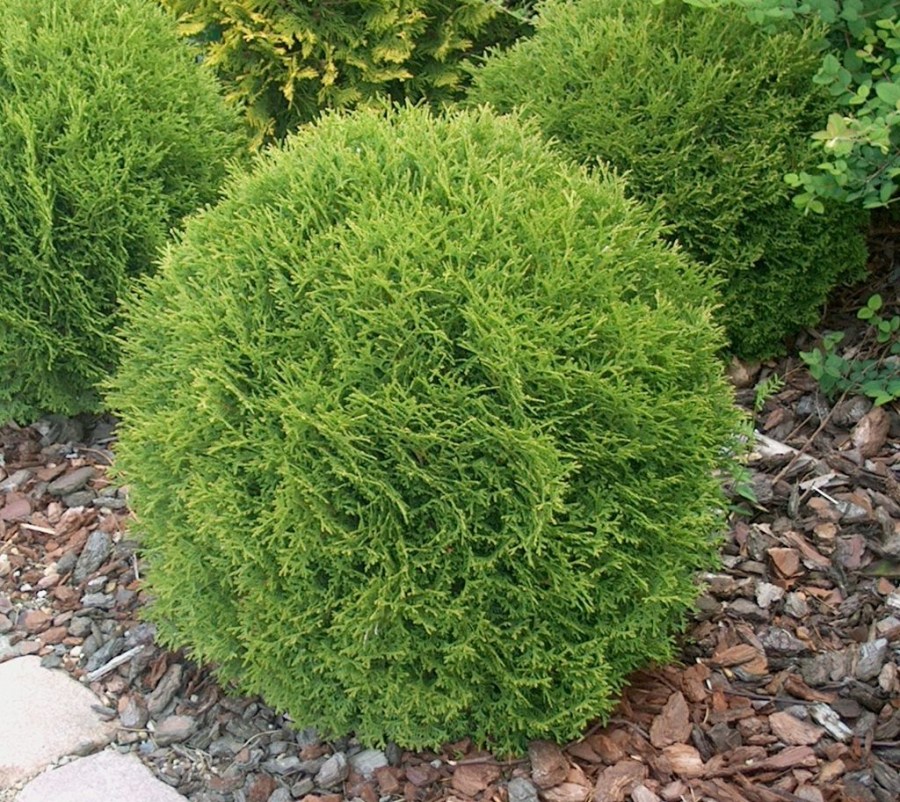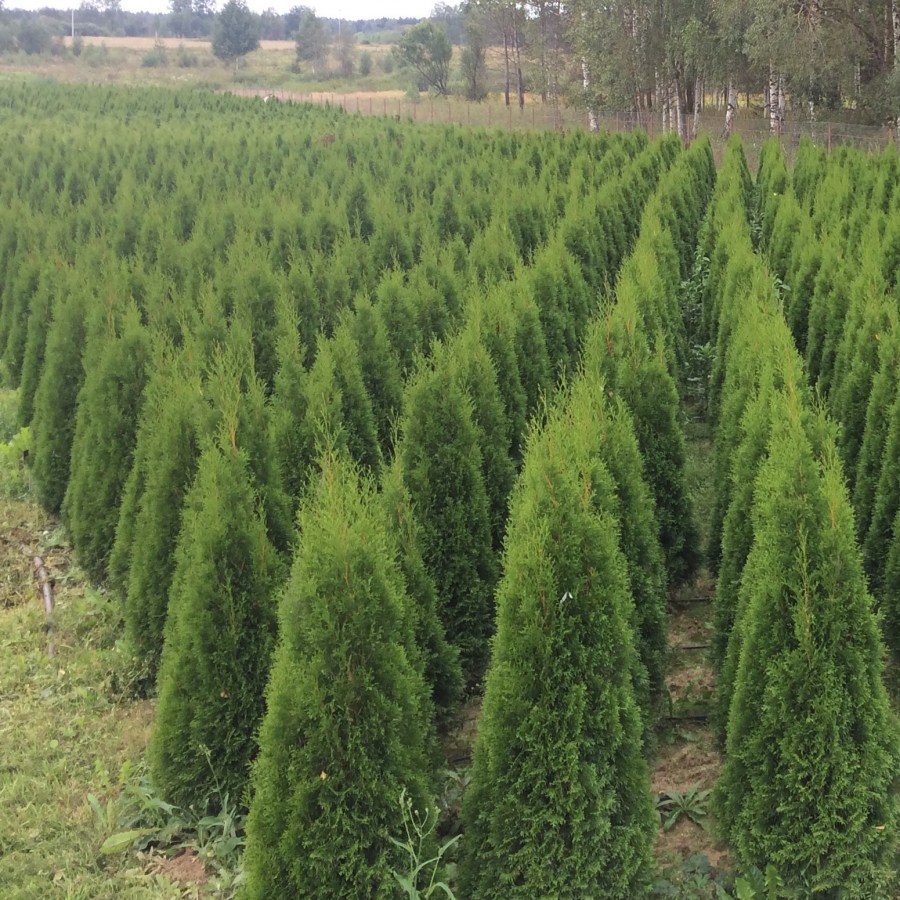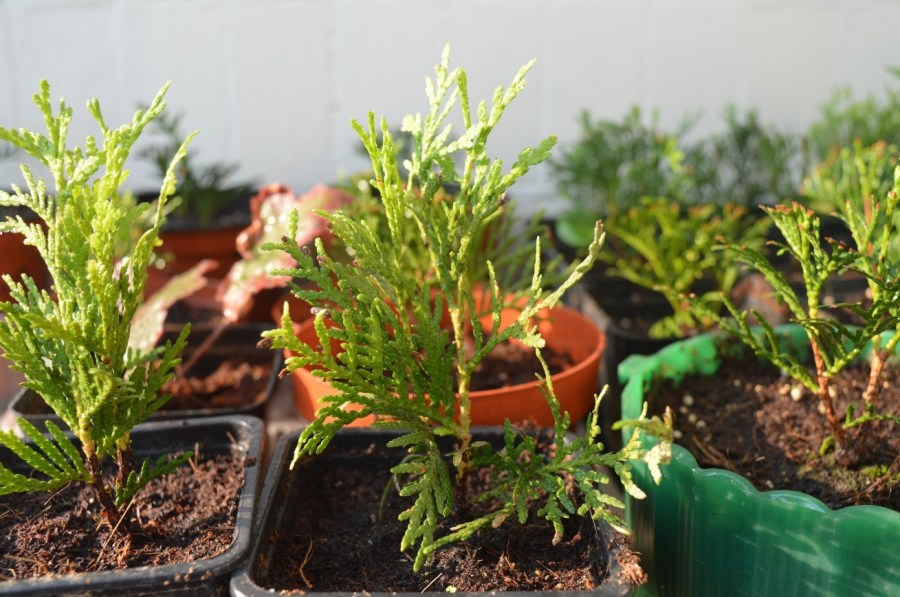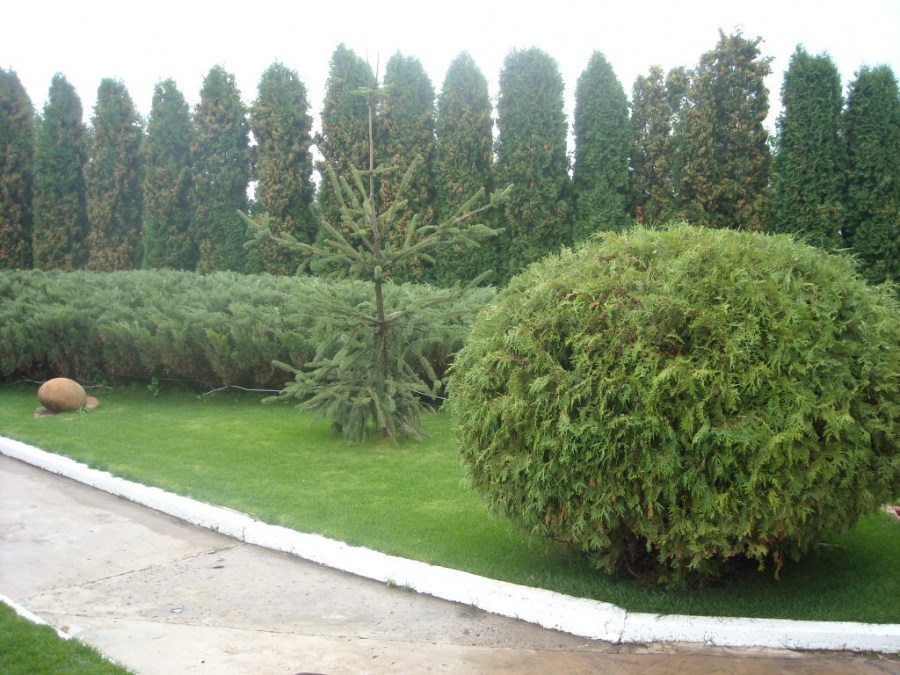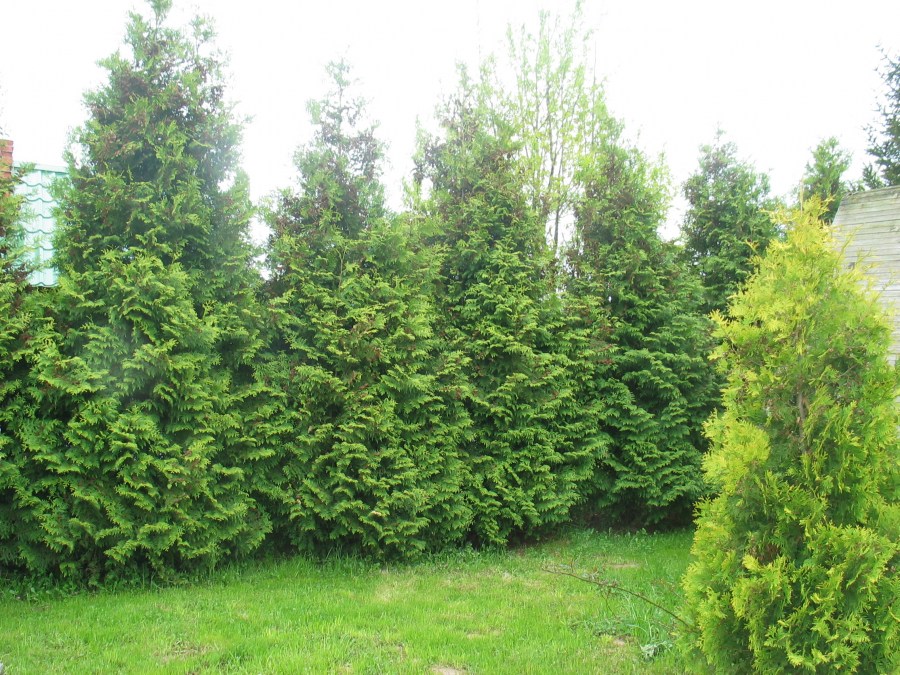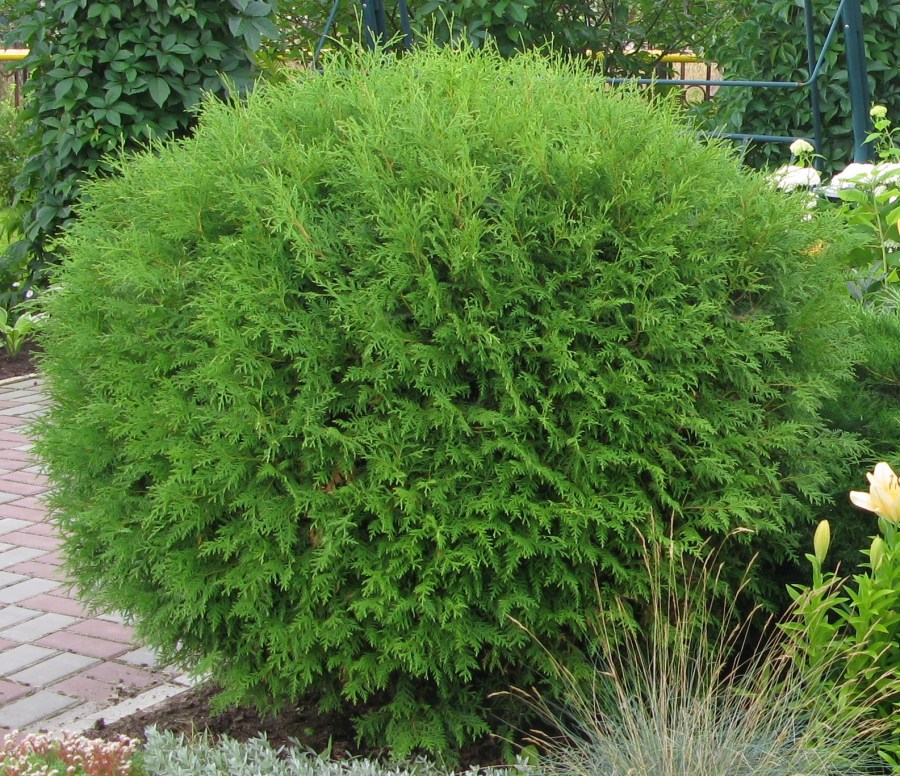Thuja western - review of different varieties, species selection, planting and plant care (80 photos)
Thuja western (lat. - Thúja occidentális) is an evergreen tree. The plant is part of a large family called Cypress, native to North America. Around the middle of the 16th century, the plant was introduced by seafarers to Europe.
General description of thuja
Thuja has excellent decorative properties. Looking at the photo of the thuja western, you can get a certain idea of what it will look like in the landscape.
This tree is very durable. Many gardeners are engaged in its breeding, it is quite popular among landscape designers. Wood is used for carving and in the manufacture of furniture.
The crown of the tree has a pyramidal or oval shape, the roots have compact dimensions. The tree is characterized by slow growth, reaches a height of 12-20 meters.
The young plant has a smooth bark, its color is red-brown, with age the bark acquires a gray-brown hue. At an old tree it peels off, narrow strips are separated from the trunk.
The needles of the thuja are scaly green, has a size of 0.2-0.4 cm, tightly adjacent to the branches. In the winter season, it acquires a brownish color. The life span of the needles is 2-3 years, after this period it falls off along with small branches.
Fruits are small scaly cones (8-12 mm in diameter). Wood of almost all varieties of this plant is reddish in color, has a pleasant coniferous smell, and is resistant to decay.
Varieties of wood
In nature, there are a sufficient number of varieties of thuja. Special species for planting in parks, gardens and squares have also been bred. In Russia, there are 10-14 frost-resistant species adapted to the local climatic conditions.
Thuja western Brabant
Colon-shaped crown with a diameter of 1.5 meters, reaches a height of five meters. The green shade of the needles changes to brown in winter. During the year, it increases in height by 30-35 cm, in width - by 15 cm.
Frost-resistant, easy to clean. You can land in well-lit and shaded areas. However, the plant must be protected from strong winds.
A haircut allows him to form a beautiful crown. It has brown cones about 1 cm in size. The variety is great for use in hedges and malls.
Thuja western Smaragd
A conical, fairly dense crown is characteristic. Thuja reaches a height of 4.5 meters. In the cold season, it keeps its dark green color of needles.
This variety grows very slowly, which avoids frequent haircuts and simplifies maintenance. Smaragd is a frost-resistant and photophilous variety, but needs to be protected from too low temperatures and winds.
Kolumna
A narrow, columnar crown of about 7 meters in height, and a diameter of 1.5 meters. The shoots are arranged horizontally, the color of the needles does not change in the cold season. In a year, it adds approximately twenty centimeters in height.
Needs abundant watering, does not tolerate dry soil.
Holmstrup
The tree is not higher than 3.5 meters tall, has a columnar crown with a diameter of about a meter. The needles do not change their green tint year round. Slow growth is characteristic - approximately 12 cm per year. A haircut is extremely rare.
It grows well in any soil, calmly undergoes temperature changes, prefers well-lit or slightly shaded places, generally unpretentious in leaving.
Fastigiata
Frost-resistant, the crown has tightly pressed branches to the trunk. It has soft needles, the color of which remains unchanged throughout the year. Strong aroma is characteristic.
It reaches six meters in height, and the growth per year is 30 cm. Frequent haircuts are needed, it needs a moist loamy substrate.
Sunkist
The tree is about 3-5 meters in height, the crown is conical. Frost-resistant, has needles of lemon yellow color. In the cold season, it acquires a bronze hue. Growth is slow, over 10 years reaches two meters.
He does not like dry soil, its color fades from a deficit of light. Both single landing and combination with other trees or bushes are possible.
Wagneri
Winter-hardy plant, has an ovoid crown, reaches a height of 3.5 meters, a width of one and a half meters. Its gray-green color for the winter changes to copper. Crohn perfectly holds the shape, she does not need frequent trimming. He loves the sunlit spacious areas.
Claude of Gold
It is a shrub of two meters in height, the cone-shaped crown has a diameter of 1.2 meters. Needles are most often lemon in color; there are also yellowish-orange species. In winter, changes its color to copper.
Care for it is simple, requires a bright place with protection from the wind. In low light, color may fade. It tolerates drought, poorly - too abundant watering. Looks great in compositions with other plants.
Leaving and landing
Thuja is unpretentious and not too demanding in terms of care. It can grow in any soil and conditions. But she has her own characteristics. Most of all, he prefers a well-lit area. However, landing in the shade will help to maintain decorative qualities for a longer period.
It grows well enough in dry soil. Very photophilous - for high-quality formation of the crown, 6-7 hours of sun per day are necessary, otherwise the plant will stretch.
Reproduction is carried out both by seeds, and by seedlings, cuttings. Given that her growth is very slow, the best option is to buy ready-made seedlings. But they are quite expensive, and seeds rarely retain the characteristics of the variety. For these reasons, the plant is best propagated by cuttings.
Seeds for subsequent planting must be collected in the fall. Cones are cut, dried in a cool room (temperature should not exceed 7 degrees). After drying the flakes, the seeds are removed and stored until spring in tissue bags.
After the first snow appears, the seeds are placed directly in the bag on the ground, sprinkled with a layer of snow about 30 cm thick - they need stratification.
Thuja western is planted using these seeds in the spring. They are laid in the grooves, previously flooded with water, with a distance between them of 10-15 cm. Planting is done at a shallow depth of only 0.5 cm. After planting, they must be sprinkled with dry earth, mulched with needles (sawdust will also do).
Watering of seedlings is carried out regularly, but not too plentifully, at first protection against too intense sunlight is provided. The tree grows very slowly - during the first year it adds only 4-5 cm.
The soil around the seedling is mulched with sawdust and peat. After three years from the moment of landing, a dive is performed, and landing on a permanent place is permissible only after 4-5 years.
For propagation by cuttings, they are cut in the spring, preferably in cloudy hours. The stem is taken from a young annual shoot, it must be at least 10 cm long, and the tree itself must be 4-8 years old. Cut cuttings are immersed in a weak manganese solution for a day. Then they are planted in the soil to a depth of 5-6 cm at an angle of 20-30 degrees.
Allowed landing in containers or pots. You can also plant in open ground, be sure to cover with a film, with a distance between them of 10-15 cm.
The cuttings carried out in the spring help the plants to take root as well as possible and grow quickly. Cuttings in the summer do not give such results, it is necessary to wait for rooting until next year.
Photo thuja western
Installation of fences: 110 photos and an overview of the basic installation methods
How to make a well: 100 photos of creating a classic well
Electric jigsaw - how to choose the best tool (80 photos)
Join the discussion:


